How to play acoustic guitar like Jimmy Page
Master the Led Zeppelin guitarist's melodic folk and dissonant style using open tunings and a variety of picking techniques
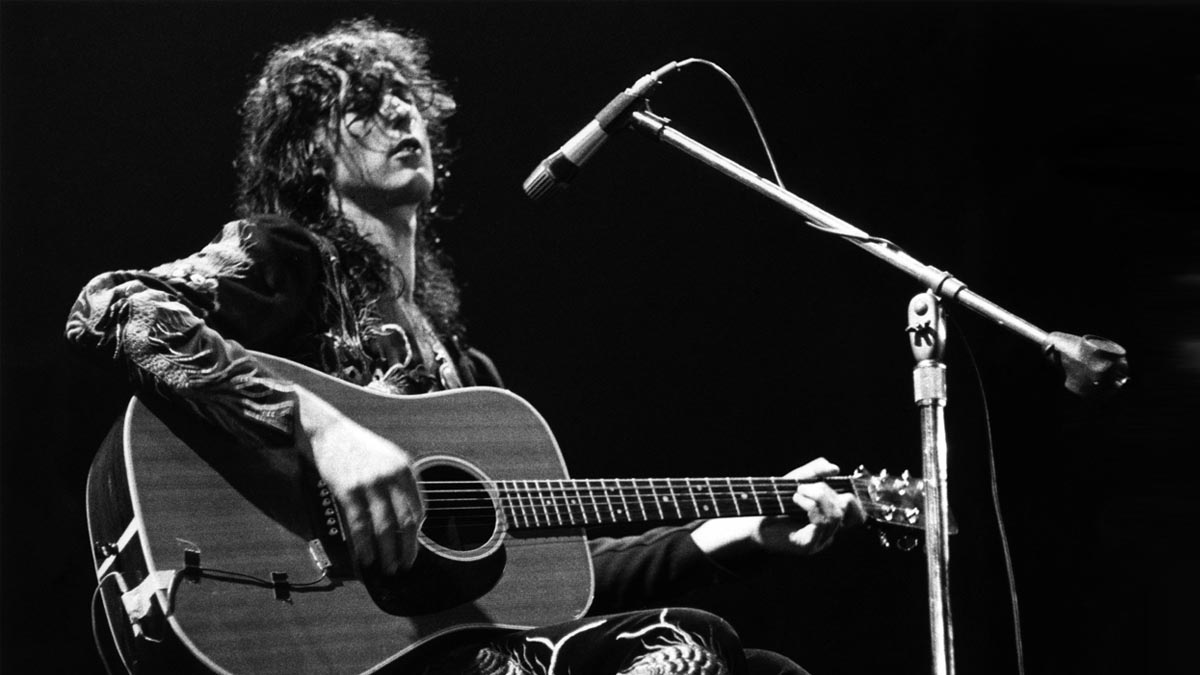
Initially inspired by skiffle and rock ’n’ roll but eventually becoming famous as the ultimate Gibson Les Paul-toting riff-machine, Jimmy Page was also drawn to the experimental acoustic styles of John Renbourn and Bert Jansch (among others) from a very early stage, and his distinctive acoustic playing features heavily on nearly all of Led Zeppelin’s albums.
He jokingly refers to his eclectic mix of acoustic styles as his CIA (Celtic, Indian, Arabic) connection and it is as significant a part of his style as the electric playing that frequently causes Zeppelin to be mislabelled as ‘heavy metal’.
Page’s use of both altered and open tunings enhances his vocabulary of exotic scales and chords learned from the likes of Davy Graham, and from his own extended travels in North Africa. Jimmy fluctuates between this dissonant approach and a contrasting, more melodic folk sensibility.
The audio examples reflect this, using a mixture of clawhammer-style fingerpicking and more conventional ‘flatpicking’ technique.
Though Page was notable for adding ambient reverbs and even flanging effects to recorded acoustics on occasion, the basic tone was never completely obscured. Our examples steer clear of the more outlandish effects, making it easier and more satisfying to sit and play them unamplified.
Page has used a wide variety of guitars, including a Harmony, Gibson J-200, Martin D-45 and a custom doubleneck Ovation for live work. So it’s fairly safe to say the sound is in the fingers rather than a particular instrument.
Our recordings were made with a Yamaha CPX 900, mic’d at the soundhole. A few different reverbs were used to give a little extra authenticity but these are by no means necessary to make these examples sound correct. Jimmy himself would have come up with the ideas and tunings long before studio effects came into the picture!
Example 1. DAGDAD tuning
Using one of Page's favourite tunings, DADGAD (low to high), this example mixes exotic scale patterns with occasionally dissonant chords. The hammer-ons and pull-offs are a little fiddly at first but a few plays through should make it more comfortable.
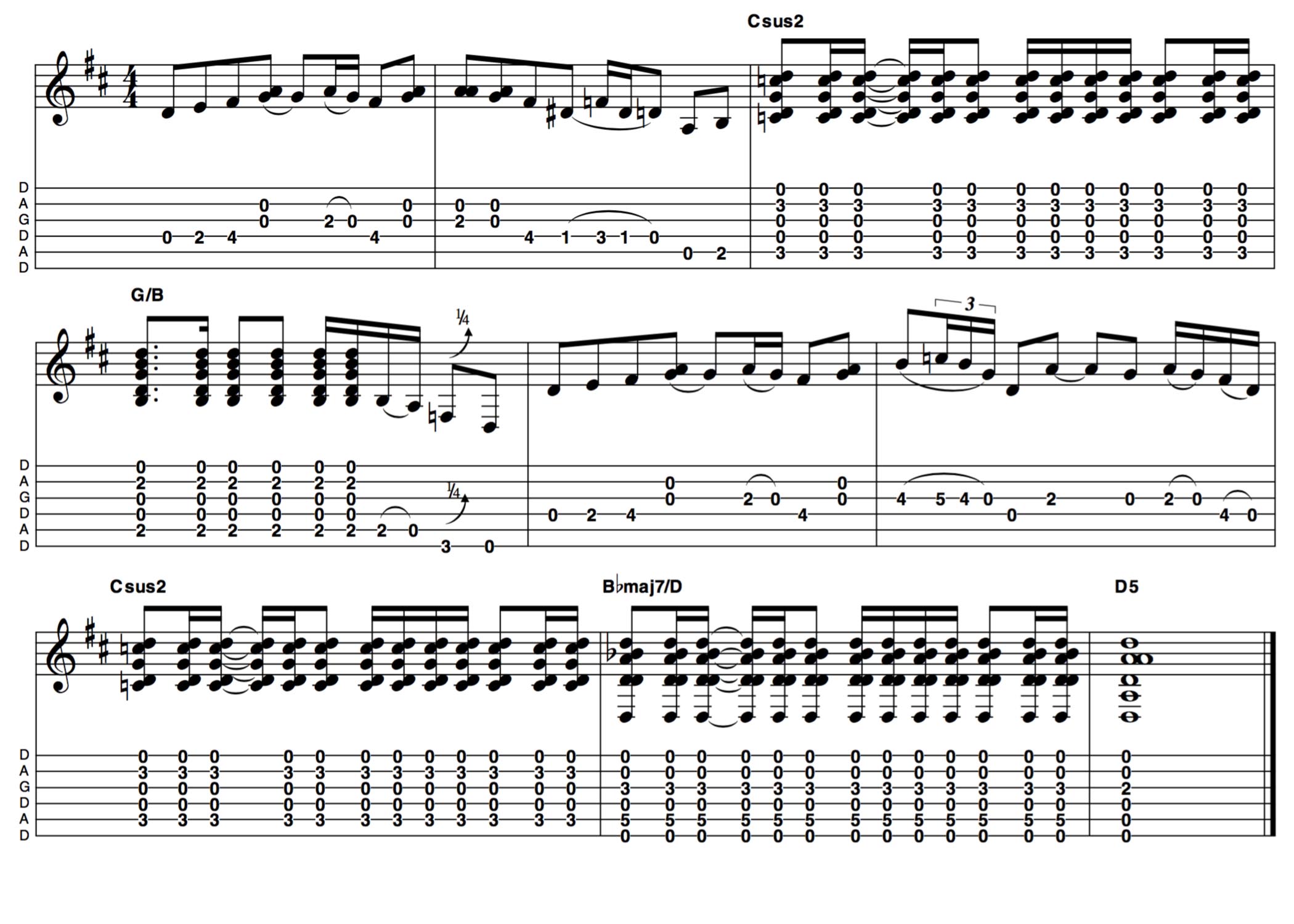
Example 2. G-tuned clawhammer
Played in open G tuning (low to high: DGDGBD), this example takes a more melodic, folky approach with clawhammer fingerpicking. It also demonstrates some interesting chord voicings that would not be possible in conventional tuning.
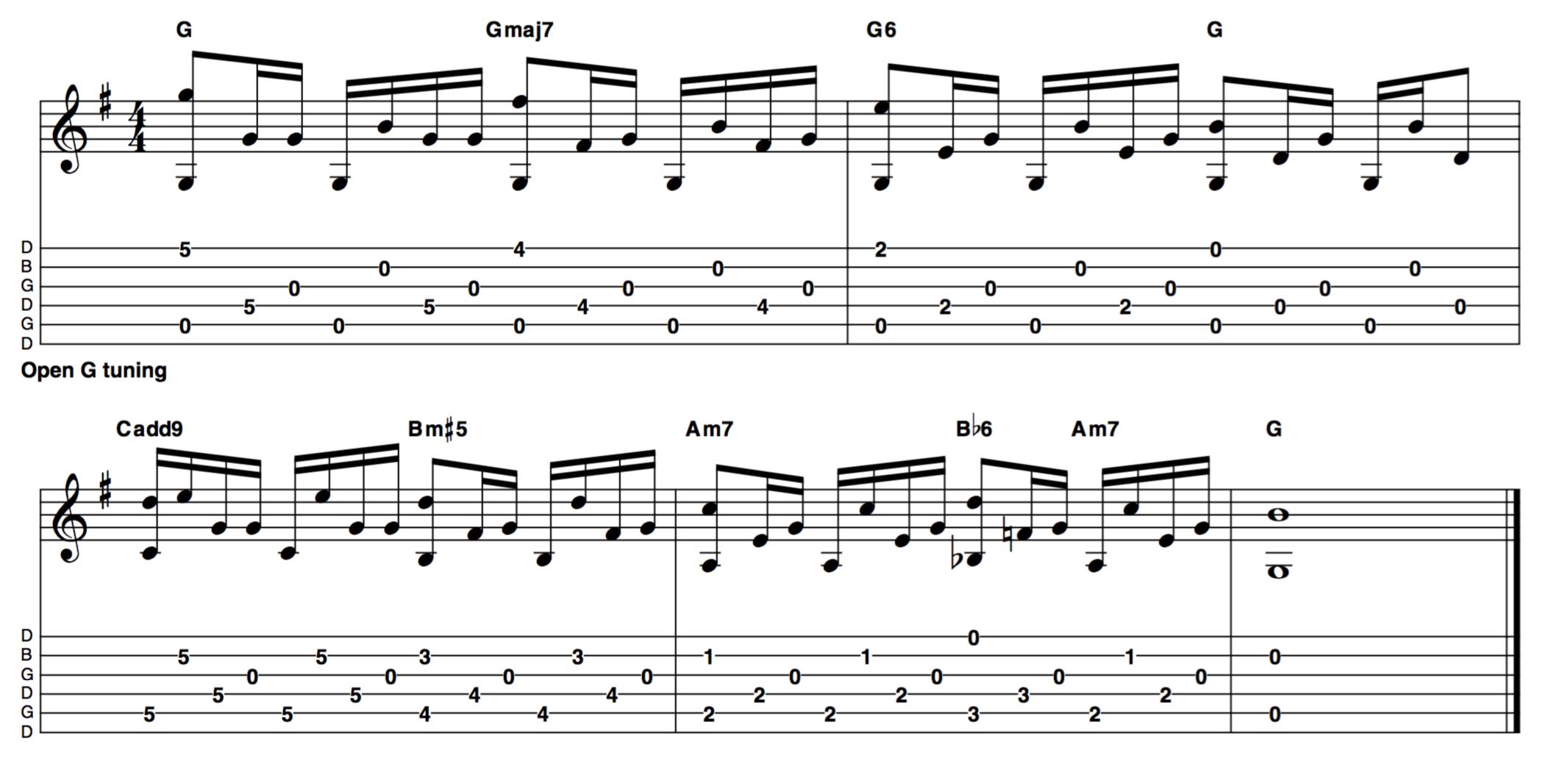
Example 3. Strumming with sus chords
Using standard tuning, this example would also sound great on a 12-string. It demonstrates Jimmy’s approach to strummed chords, adding a couple of sus2/sus4 melodic details and a nice harmonic at the end.

Example 4. Voice leading
Using altered chord shapes to facilitate the melody/top line, this example keeps the fingerpicking nice and even as it descends through various stages. Note the slight variation in picking for bar 6, allowing the melody to continue unbroken through the D7/A chord.
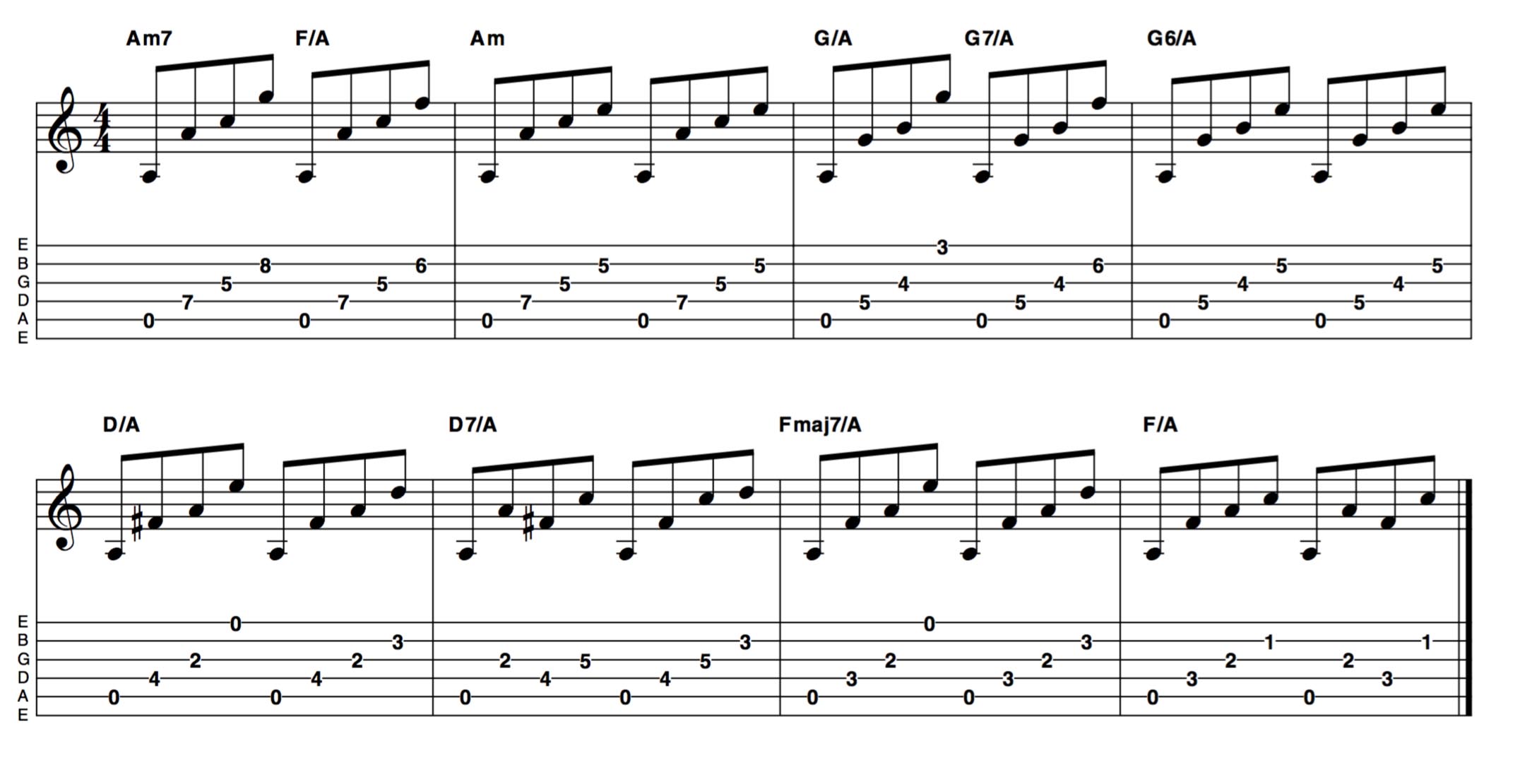
Example 5. Strumming plus bass notes
Using open G tuning (as described earlier), this example contains elements of jazz chord voicings and chromatic chord movement made relatively simple to play by this tuning. Using a pick, keep the strumming relaxed and watch out for the single bass notes as these are an important detail.
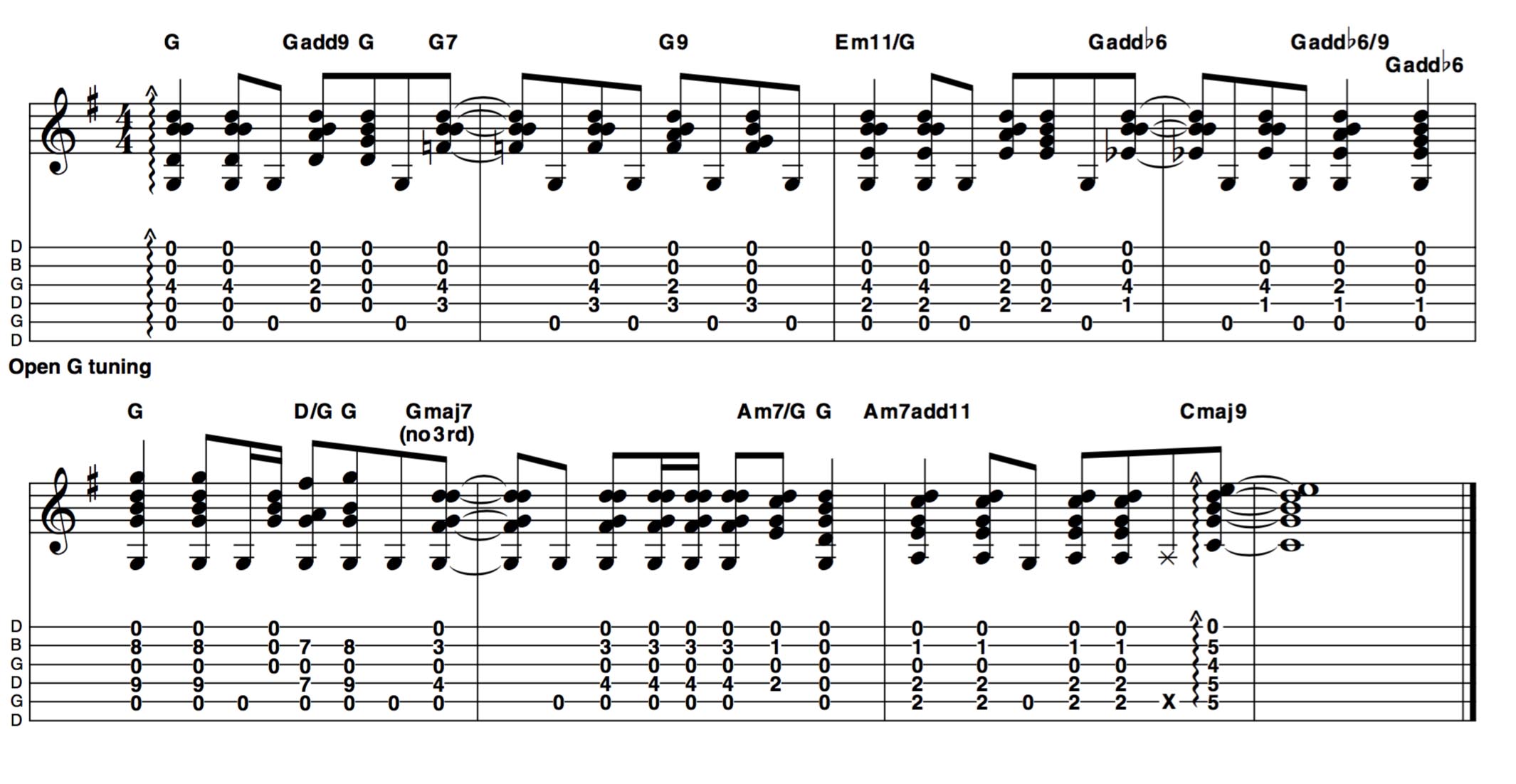
Get The Pick Newsletter
All the latest guitar news, interviews, lessons, reviews, deals and more, direct to your inbox!
As well as a longtime contributor to Guitarist and Guitar Techniques, Richard is Tony Hadley’s longstanding guitarist, and has worked with everyone from Roger Daltrey to Ronan Keating.
“There are so many sounds to be discovered when you get away from using a pick”: Jared James Nichols shows you how to add “snap, crackle and pop” to your playing with banjo rolls and string snaps
Don't let chord inversions bamboozle you. It's simply the case of shuffling the notes around








![Joe Bonamassa [left] wears a deep blue suit and polka-dotted shirt and plays his green refin Strat; the late Irish blues legend Rory Gallagher [right] screams and inflicts some punishment on his heavily worn number one Stratocaster.](https://cdn.mos.cms.futurecdn.net/cw28h7UBcTVfTLs7p7eiLe.jpg)


